
Dear Friend and Reader:
On Monday, Sept. 19, we say goodbye to Elizabeth II, who reigned over the United Kingdom for 70 years. For most people, she is the only queen they can name, except maybe for Freddy Mercury.
Elizabeth was born at the dawn of radio, in 1926. The first mass medium, meaning that everyone listened together, radio transformed the world into what Marshall McLuhan called the Global Village.
Her public debut was a live radio presentation on BBC Children’s Hour in 1940, four years after she had become heir apparent. Radio was a family legacy; the previous year, her father, George VI, had overcome a debilitating stammer — his speech freezing up — to become an effective wartime king and address his people. This was the subject of the phenomenal film The King’s Speech.
The teenage Princess Elizabeth’s eloquent broadcast encouraged strength and courage in the children of the empire who had been evacuated from the cities to temporary homes in the countryside, and even to Australia, Canada, New Zealand and the United States — a move designed to ensure the survival of the next generation (in a time very different from our own).
“Thousands of you in this country have had to leave your homes and be separated from your fathers and mothers. My sister Margaret Rose and I feel so much for you as we know from experience what it means to be away from those we love most of all,” she said, revealing something of the life she led as a royal. In so doing, she said: you’re one of us.
Listen to Princess Elizabeth address the world, at age 14
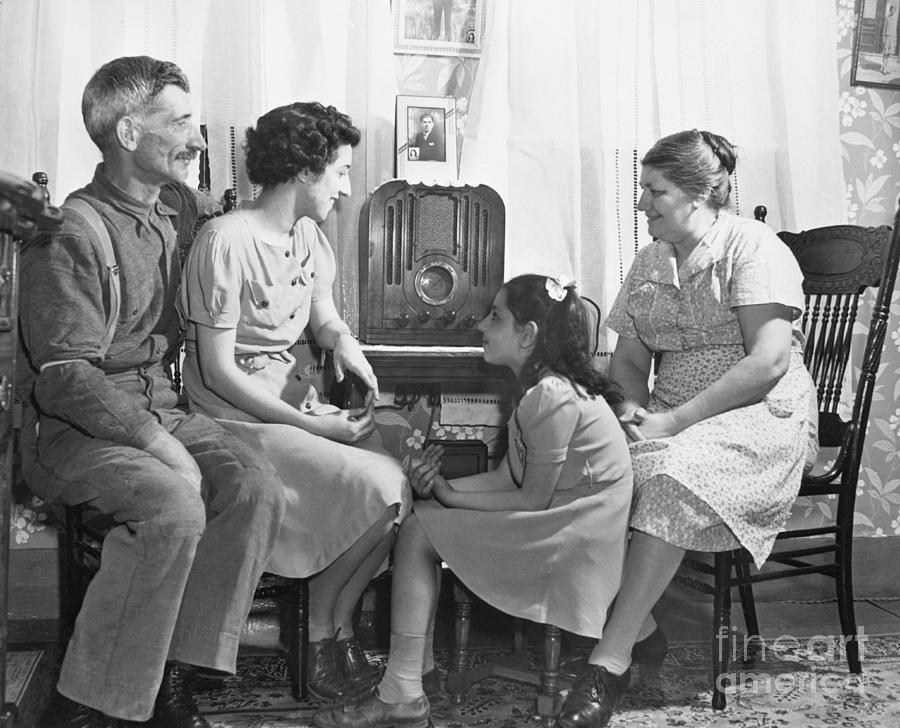
The Electrical Tribal World
For many centuries, back to the beginning of phonetic alphabets, people had been conditioned by written and then printed speech to think of themselves as individuals. I don’t mean they were fully self-actualized. Rather, the seemingly firm concepts of I, me and mine seem to involve the interior orientation that the printed word establishes in people.
This is a detribalizing effect. Tribes demand conformity and submission and do not stand for individuality (unless we are talking about the chief, his successor, and the medicine man). In a sense, print made us into individuals and took away the power of the collective.
Radio had the opposite effect on psyche and society, instantaneously concerting people back into tribal beings who are trained to think in mass consciousness. McLuhan observed that radio “contracts the world to village size, and creates insatiable village tastes for gossip, rumor and personal malice.”
It also creates a speed-up of information that caused acceleration in other media — such as newspapers having four editions each day, and the development of wire services to move news and photos around the world quickly.
In this environment, both Princess Elizabeth and her father — along with many other internationally-known leaders, from Franklin Roosevelt to Hitler to Gandhi — symbolized the distinct individual. That is, of course, part of the royal role: to be the archetypal family for a nation.
While Elizabeth was born into the radio era and made her debut there, most would say she is the product of the TV era. Articulate, strikingly beautiful and modest in her ways, she was a perfectly telegenic figure. McLuhan called TV the Global Theater, though Elizabeth personally refused to succumb to its antics. Members of her immediate family disintegrated under its glare.
Through the rise of television and into the even more chaotic and decentralized conditions of the digital age, Elizabeth held together the image and most likely the reality of the royal family, which serves as the de facto soul of England.
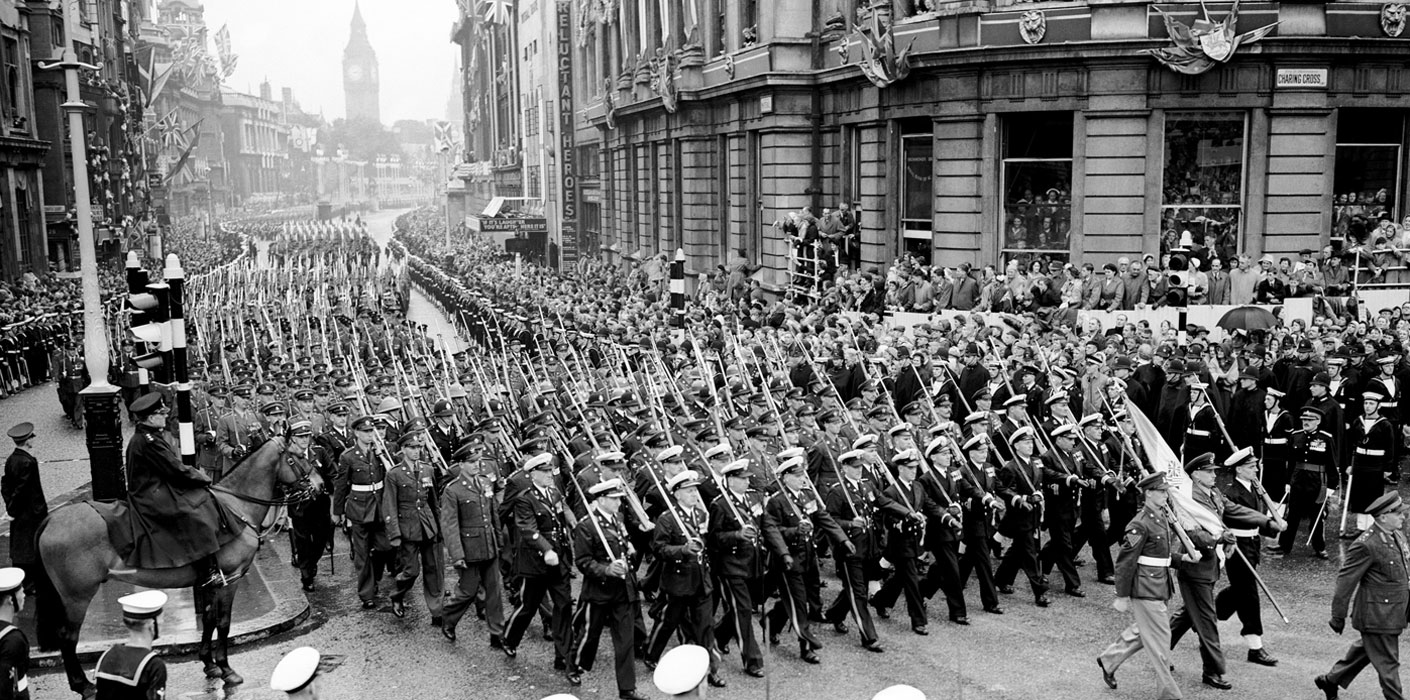
Eris and Electrical Communication
In strict media studies terms, Elizabeth was the radio star swallowed whole by television. But her astrology, including that of key events in her life, tells a more complex story, or perhaps better said, Elizabeth is the Eristocrat who will tell us something about this new influence.
Part of how the meanings of new planets is revealed is by observation from events and people. In Elizabeth, we have both — a stunning Eris placement in her natal chart, and then Eris appearing with many aspects in every chart significant to her becoming Queen.
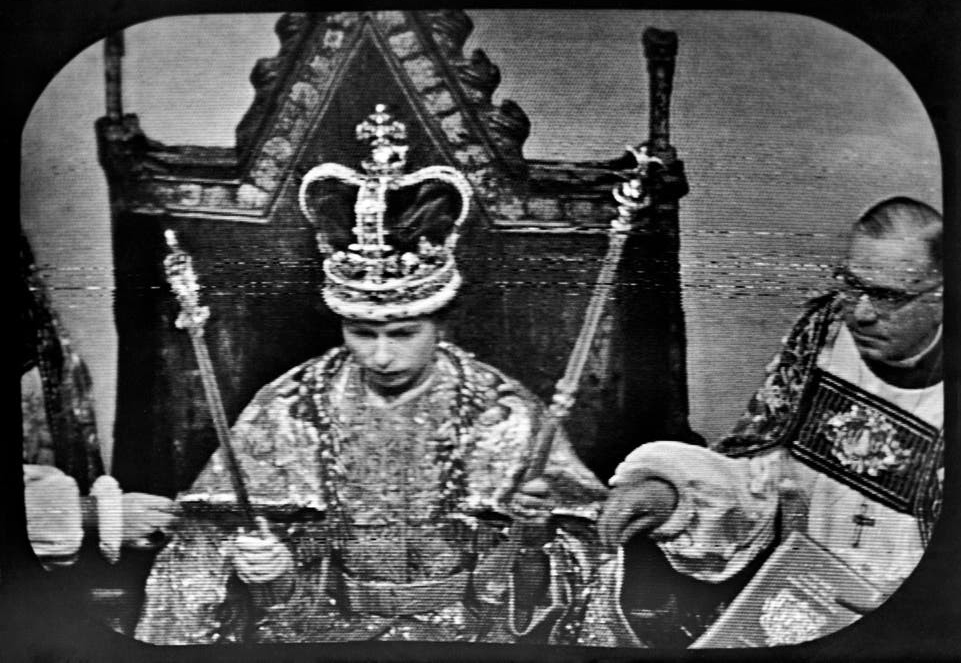
First, though, let’s consider her role in the transition of the monarchy into a TV production. Her coronation on June 2, 1953, was the first televised coronation of a monarch, in or out of England. At home, more than 20 million people watched on television (about half viewing in the homes of friends), outnumbering the radio audience for the first time.
In the United States, 85 million watched, and all 11 hours of the events were broadcast in Germany.
BBC in its own history of the event says that coverage “included cameras installed inside Westminster Abbey for the first time, to show the Coronation Service. The Queen gave her permission for this departure, against official advice — revealing the monarchy’s willingness to move with the times.”
What BBC does not say is that a survey at the time found that 85% of the British public wanted to see the event televised, which they did, except for parts of the coronation considered too personal or esoteric for public display.
So here we have an image of the television Queen.
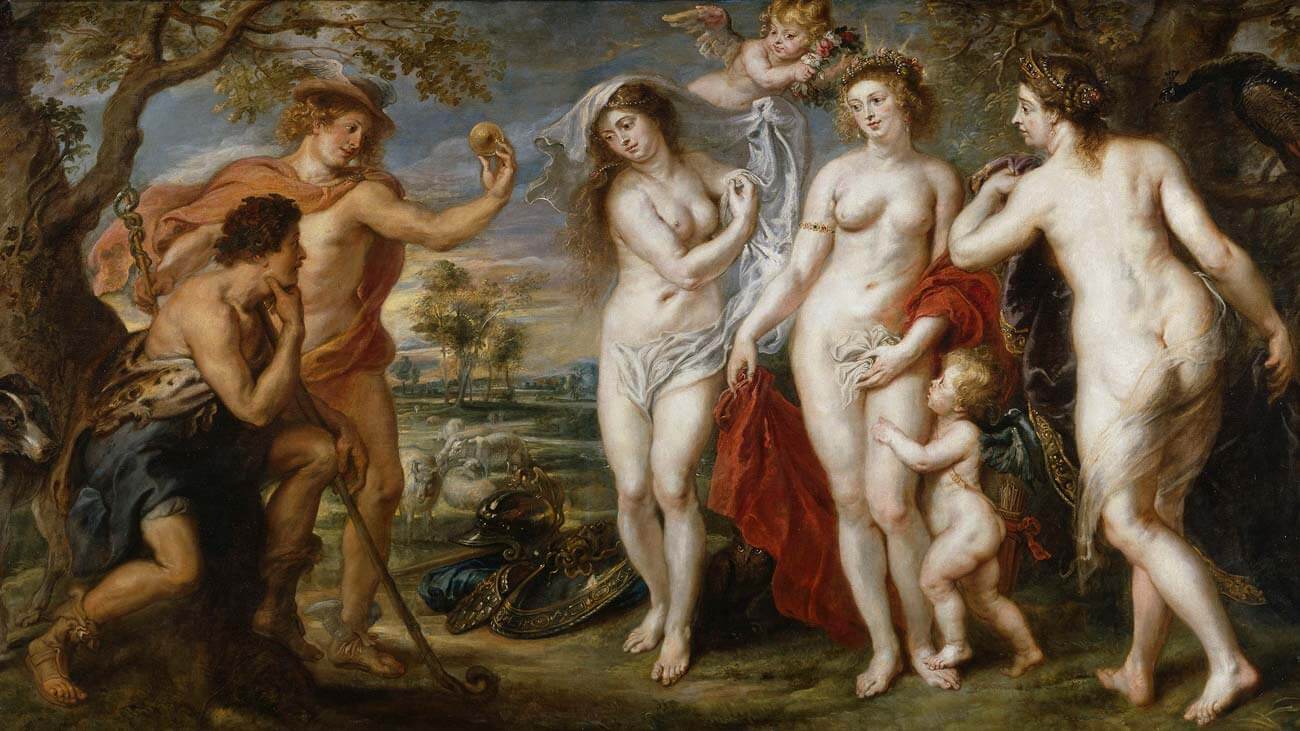
The Greek Goddess of Discord
Eris was discovered in 2005 and named in 2006. She was named for the Greek goddess of discord in a time of global strife, according to co-discoverer Chad Trujillo. Astrologers are accustomed to assessing Eris as a chaotic influence and most do not look deeper.
In my 2007 monograph about Eris, called Facets and Fragments of Self, I recognized Eris as a sigil of the postmodern age, where nothing makes sense, very little comes in order, and where identity is shattered into infinite shards. I proposed that this had everything to do with the consciousness of the internet. Later research revealed that Eris is involved in the rearrangement of society under the influence of major advances in communications technology, including the Gutenberg printing press one full Eris cycle ago.
Eris made more than a cameo in the chart for Donald Trump taking the presidency. This occurred during the Uranus-Eris conjunction of 2016 and 2017. (Elizabeth lived through this aspect one Uranus cycle ago shortly after she was born.)
As our society moved from governance by radio, then television and then digital, her role was to do her part to “hold the world together.” She presented a unified face of the nation, and in so doing, preserved its dignity through increasingly troubled, turbulent and chaotic times.
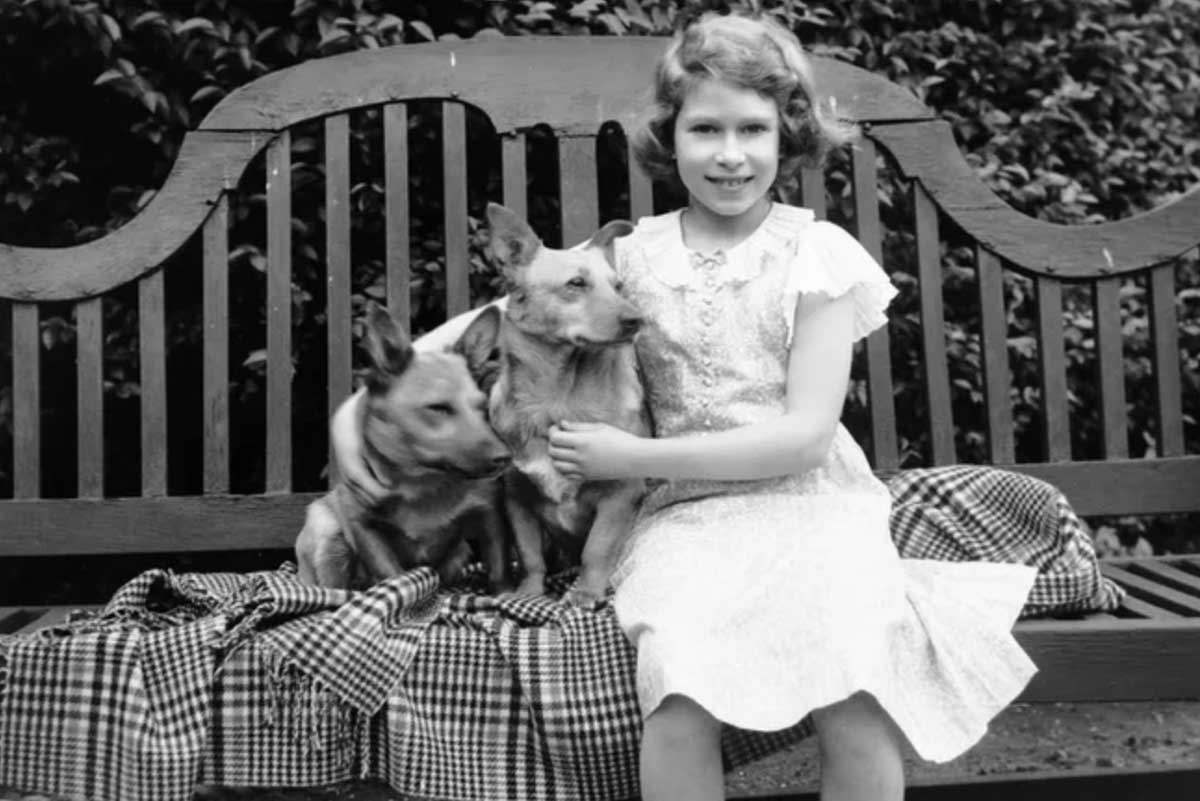
Three Charts from Elizabeth’s Life
For a more thorough reading of Elizabeth’s chart, please listen to last week’s Planet Waves FM. I devote most of the program to her, and publish the charts in full.
Let’s look at three charts that are compelling me to reconsider how I think of Eris, or perhaps to consider a new expression of Eris, whose role is not to propagate disunity and chaos but rather to provide continuity. The charts that I am not describing today all follow the same pattern.
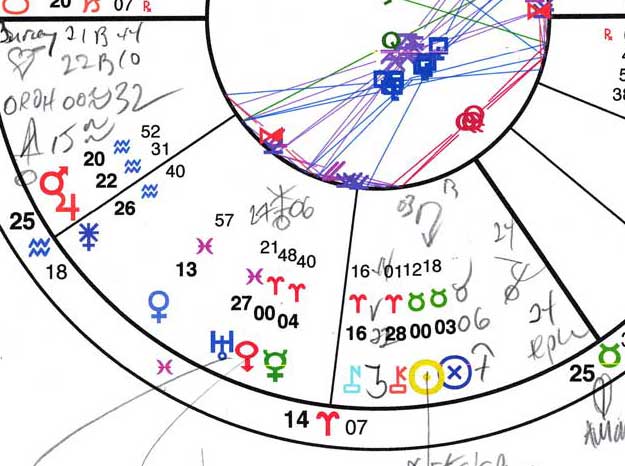
Eris made its transition from Pisces to Aries over a five-year period from 1922 through 1927. The Eris in Aries era began June 2, 1922. During those years, Eris was dancing back and forth across the Aries Point, or the first degree of Aries.
Elizabeth, born April 21, 1926, is born with Eris in this degree.
The Aries Point, or the location of the Sun on the vernal equinox, is a place in the zodiac that describes where the personal intersects with the collective. For someone like a monarch, it’s an important point to study because it describes the ways in which public and private meet. Standing boldly in this spot was an enormous part of her character makeup.
And Elizabeth has Eris there, gleaming out of her chart. Close to Eris is Mercury, describing her mentality and her style of speech. For as staid as the royal scene may seem to outsiders, she was a forward-thinking person. Though we may never have much direct evidence, you can be sure she gave the traditionalists a push, finally outliving them all.
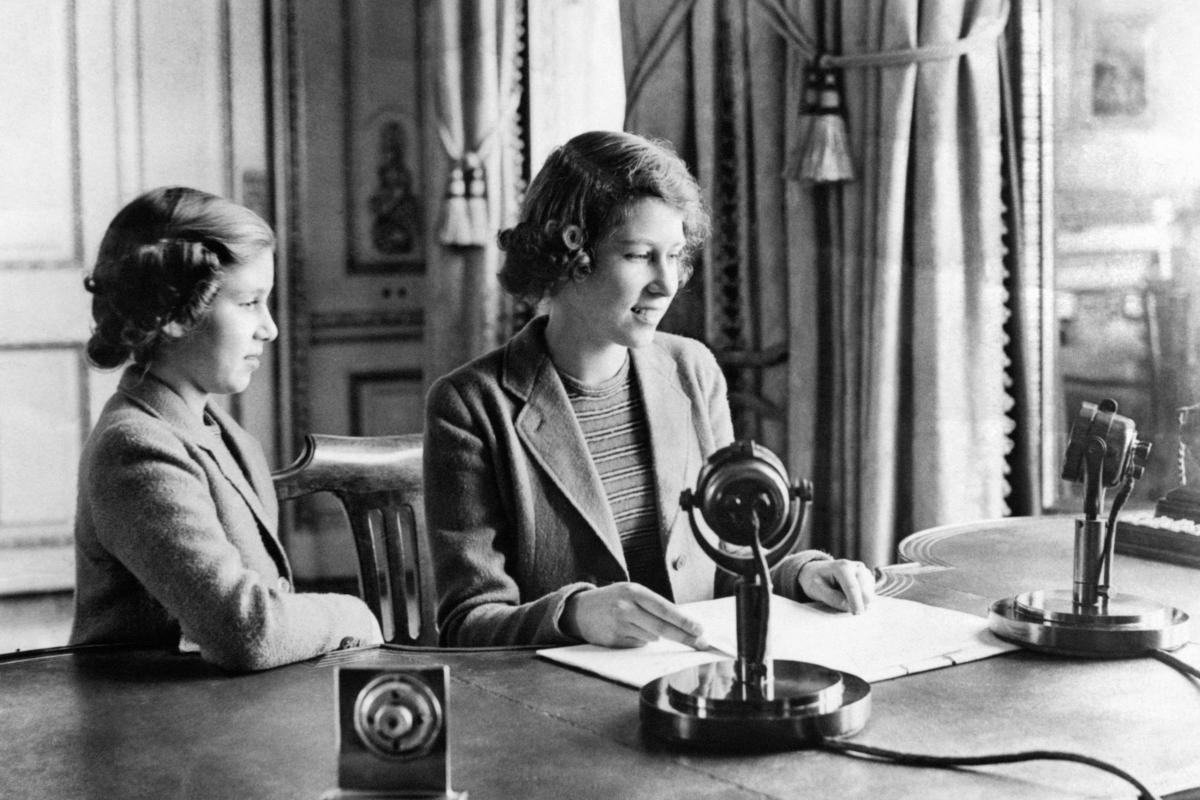
The Wartime Radio Broadcast
Elizabeth made her public debut on BBC radio’s program The Children’s Hour. One of the most famous programs in the network’s history, her appearance there counts as one of the most significant moments in her life: when she was introduced to the public with a message of encouragement to her peers.
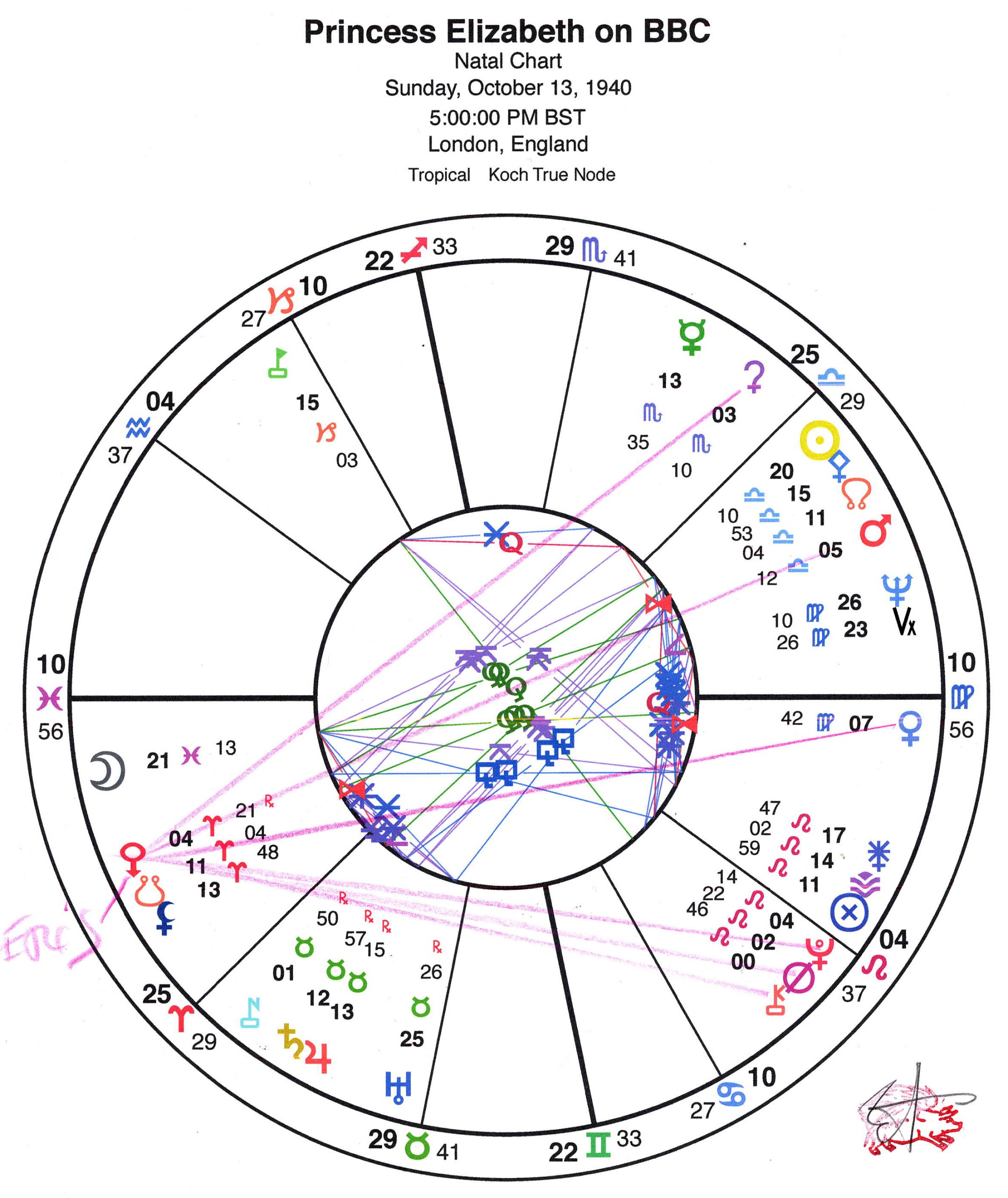
This is a timed chart, as the program began each evening at 5 pm. Eris is transiting directly over her natal Mercury, which is at 4+ Aries. This is the full merging of Mercury (the planet of communication and broadcasting) and Eris. It is a kind of coming of age ritual. Note that Eris crossed back and forth over the degree of her Mercury for about three years.
In the wartime broadcasat chart, many other planets make aspects to Eris.
They include Venus, Mars, Chiron, Pluto and the hypothetical Transpluto, all of which are picking up the vibe and broadcasting it in all directions — in ways both deeply personal and also socially relevant.
The topic of her broadcast involved the war, and this is represented in the chart by the position of Mars (the god of war) in Libra exactly opposite Eris.
This event also takes place at the Jupiter-Saturn conjunction (a 20 year event) in Taurus that coincided with the World War II era. Mercury (which represents children) is in Scorpio, exactly opposite the conjunction, describing the children far away, feeling and observing the outcome of the larger-than-life events described by Jupiter-Saturn.
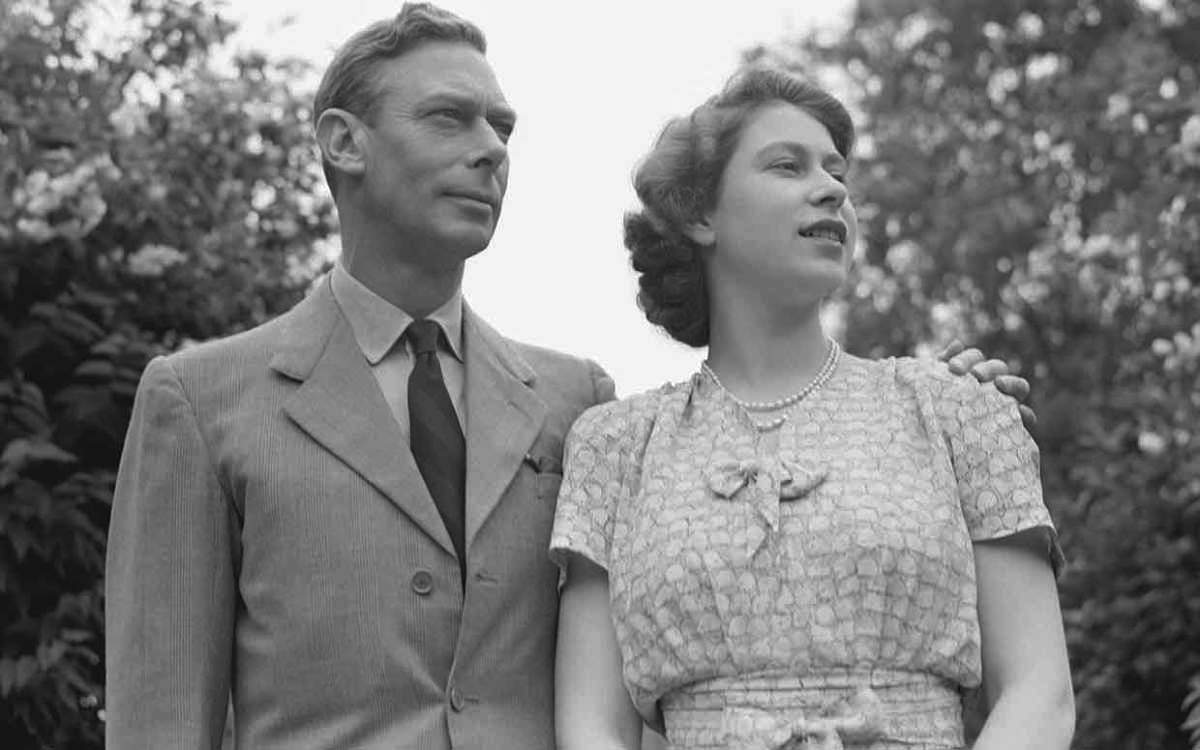
Her Ascension to the Throne
At the moment of her father’s death in 1952, Princess Elizabeth at age 25 became Queen Elizabeth II.
In this remarkable chart, Eris makes aspects to Mercury, Venus, Mars, Jupiter, Chiron and Uranus. It is essentially running the whole chart, and a personal invitation to her to take up her dharma.
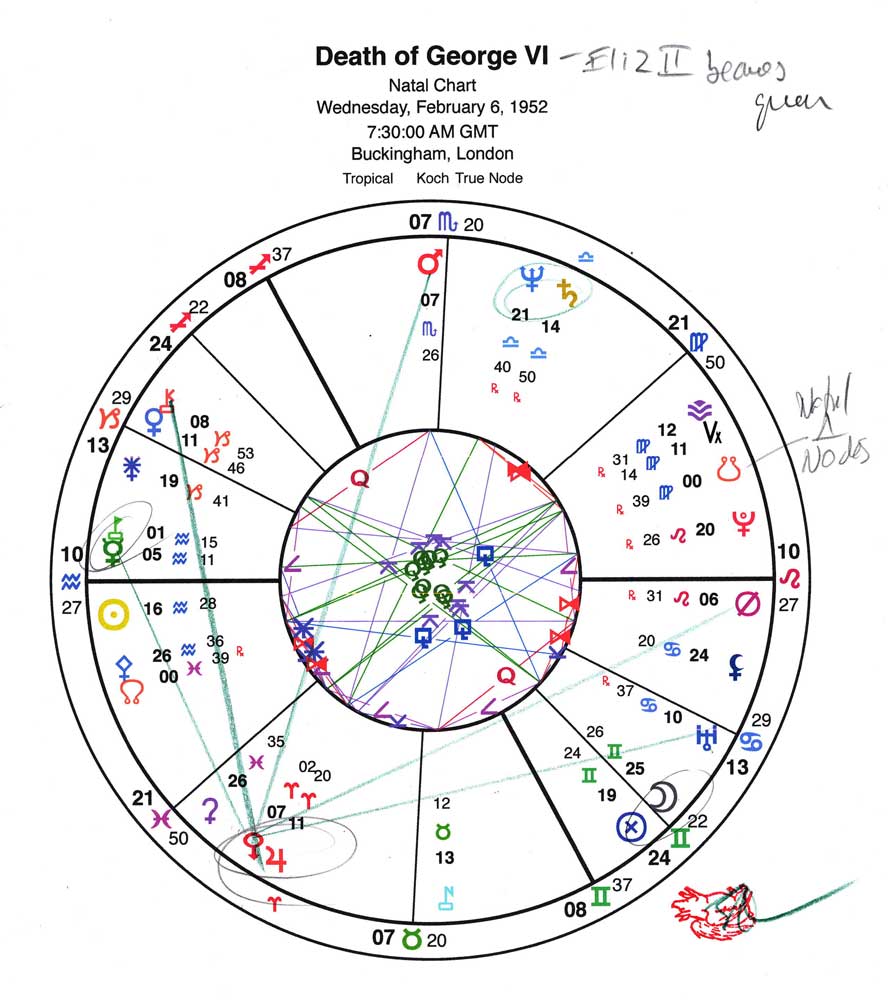
It is accurate to say that the rest is history. She is the longest serving British monarch and the second longest in known history, after Lous XIV of France (Louis the Great or the Sun King), who served for about two years longer than Elizabeth did. Though she was certainly long-lived, remember that her mother lived to age 101. For British monarchs, the second-longest serving was Queen Victoria, who reigned for 63-1/2 years.
We will now experience the United Kingdom, and the world, without her stabilizing influence. Much could be said about her role as a figure in the media and how she was able to withstand the intense glare of television that melted so many people close to her.
I am planning a radio version of the presentation on Friday night’s Planet Waves FM. And I would encourage all who are available to watch the official funeral proceedings, which begin at about 11 am BST (5 am in New York).
This only happens once, and will be her final television appearance.
Faithfully,
![]()




1 thought on “Elizabeth, Eristocrat of the Global Village”